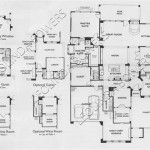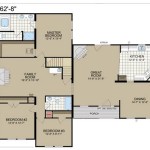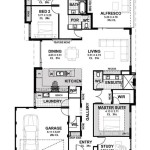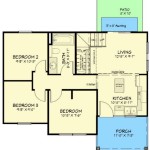Build Your Own House Plan
Are you ready to take on the exciting journey of building your own home? While it may seem like a daunting task, it is entirely possible to create a house plan that meets your unique needs and vision. Whether you're a seasoned professional or a first-time home builder, this guide will empower you with the knowledge and tools to build a house plan that reflects your dreams.
Step 1: Determine Your Needs and Vision
Begin by defining your lifestyle and the features you desire in your home. Consider the number of bedrooms and bathrooms, the size and layout of the kitchen, the presence of a garage or outdoor space, and any special accommodations for accessibility or sustainability.
Step 2: Research and Explore
Gather inspiration from existing home plans, magazines, and online databases. Study different architectural styles, materials, and floor plans to identify what appeals to you. Attend home shows and consult with architects or builders to gain insights from experts.
Step 3: Sketch Your Ideas
Using graph paper or drawing software, begin sketching out your ideas. Don't worry about perfection at this stage; focus on capturing your vision and experimenting with different layouts. Consider the flow of the home, the natural light, and the relationship between indoor and outdoor spaces.
Step 4: Use Design Software (Optional)
If you have access to design software, it can be a powerful tool for refining your plans. Software allows you to create detailed floor plans, elevations, and 3D models, making it easier to visualize and modify your designs.
Step 5: Get Engineering and Architectural Input
Once you have a preliminary plan, consult with a structural engineer to ensure the structural integrity and safety of your design. An architect can help you finalize the plans, address building codes, and provide professional guidance.
Step 6: Create Construction Documents
Construction documents are the blueprints that guide the construction process. These include detailed floor plans, elevations, sections, and specifications that outline the materials, methods, and finishes to be used.
Step 7: Submit for Permits
Before you can break ground, you need to submit your plans for building permits. This process involves reviewing your plans against local building codes and regulations. Once approved, you will receive a permit that allows you to begin construction.
Tips for Designing Your Own House Plan
- Start with a clear vision and define your needs.
- Research and explore different options to find inspiration.
- Sketch out your ideas and experiment with various layouts.
- Consider the flow of the home, natural light, and indoor-outdoor transitions.
- Seek professional input from an engineer and architect to ensure structural integrity and compliance with building codes.
- Create detailed construction documents to guide the construction process.
- Submit your plans for permits to obtain legal authorization to build.
Conclusion
Building your own house plan is an empowering and rewarding experience. By following these steps and seeking professional guidance when needed, you can create a home that is tailored to your unique lifestyle and aspirations. Remember, the journey of designing and building your own home is as much about the process as the final result, so enjoy every step along the way.

Create Floor Plan

House Plans And Design

House Plans And Design

Build Your Own House How To Get Started On Self Project

Build Or Remodel Your Own House Building A Small Plans

Small House Plans To Build Your Own Home

How To Build Your Own House Property Tips Hurst Development

25 Plans To Build Your Own Fully Customized Tiny House On A Budget Company

House Plan Ch329 Plans Floor Build Your Own
Small Guest House Plan Floor








